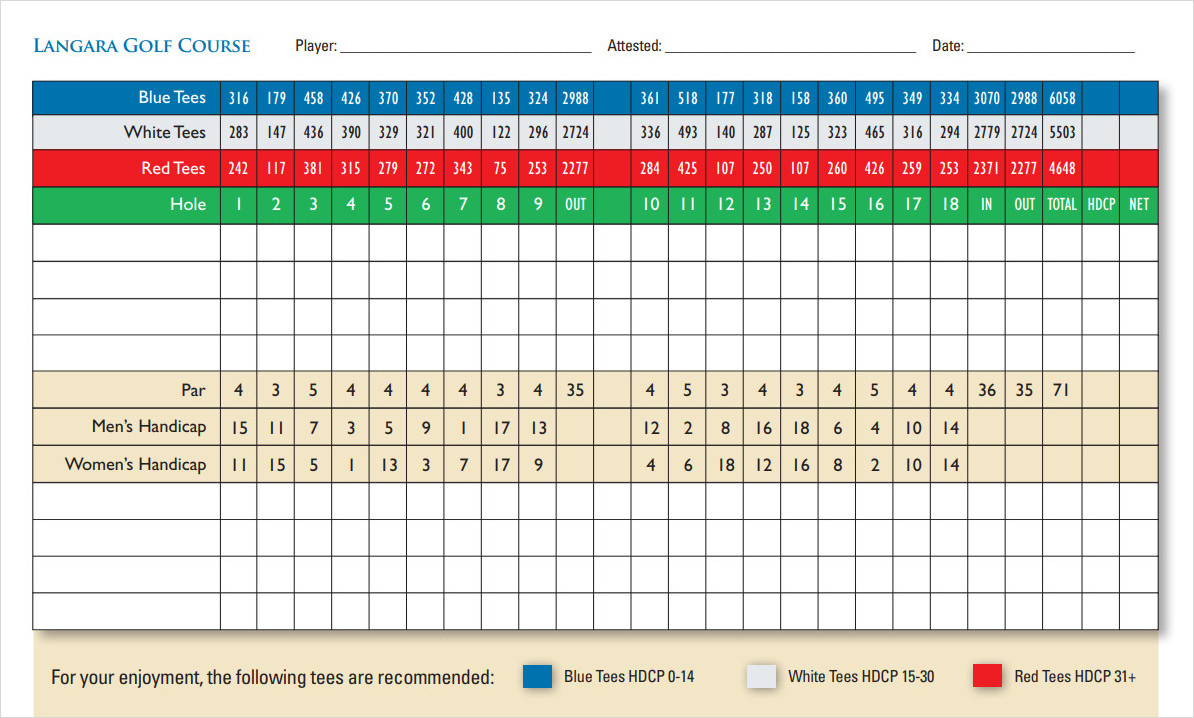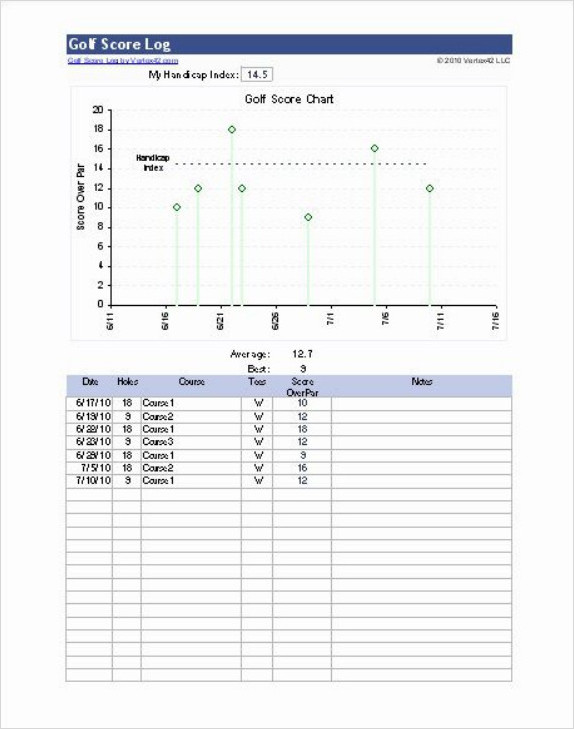
Golf is a popular sport that requires skill, precision, and strategy. Keeping track of your score is an essential part of the game, and a golf scorecard can be a valuable tool to help you keep your score accurate.
This guide will explore what a golf scorecard is, why it is important, how to create one and provide tips for successful scorekeeping. Whether you are a beginner or an experienced golfer, this guide will help you improve your scorekeeping skills and enhance your overall golfing experience.
What is a Golf Scorecard?
A golf scorecard is a document that allows golfers to keep track of their scores during a round of golf. It typically includes the name of the golf course, the names of the players, the hole numbers, par values for each hole, and spaces to record the scores for each player on each hole.
The scorecard can be printed on paper or downloaded and printed from online sources. It provides a convenient and organized way for golfers to record their scores and track their progress throughout the game.
Why is a Golf Scorecard Important?
A golf scorecard is important for several reasons:
- Accuracy: Keeping an accurate score is important for fair play and maintaining the integrity of the game. A scorecard allows you to record scores in a structured manner, reducing the chances of errors or discrepancies.
- Progress Tracking: By recording your scores on a scorecard, you can track your progress over time. This can help you identify areas for improvement and set goals to enhance your performance.
- Competition: If you are playing with others, a scorecard allows you to compare your scores with your fellow players. This adds a competitive element to the game and can enhance the overall experience.
Overall, a golf scorecard provides a tangible record of your scores, allowing you to analyze your performance and make informed decisions to improve your game.
How to Create a Golf Scorecard
Creating a golf scorecard is a straightforward process. Here’s how you can do it:
1. Decide on the Format
Choose the format you want to use for your scorecard. You can either design one from scratch using word processing or design software, or you can find pre-designed templates online that you can customize to suit your needs.
2. Include Essential Information
Ensure that your scorecard includes the following information:
- The name of the golf course
- The date of the game
- The names of the players
- The hole numbers
- The par values for each hole
You can also include additional information such as the course rating, slope rating, and any special instructions or rules specific to the course.
3. Design the Layout
Design the layout of your scorecard to make it easy to read and use. Use clear headings, columns, and rows to organize the information effectively. Consider leaving space for notes or comments, as well as a section for recording the total score at the end of each nine-hole or eighteen-hole round.
4. Print and Test
Print a test copy of your scorecard to ensure that it looks and functions as intended. Make any necessary adjustments before printing the final copies.
Example of a Golf Scorecard
Here are some examples of what a golf scorecard might look like:



















Tips for Successful Scorekeeping
Keeping score accurately and efficiently is essential for a successful golf game. Here are some tips to help you improve your scorekeeping skills:
- Use a pencil: Always use a pencil to record scores on your scorecard. This allows you to easily erase and correct any mistakes.
- Record scores after each hole: Avoid waiting until the end of the round to record scores. Instead, record scores immediately after completing each hole to ensure accuracy.
- Double-check scores: Take a moment to double-check scores before moving on to the next hole. This can help prevent errors and ensure that scores are recorded correctly.
- Communicate with fellow players: If you are playing with others, communicate with them to ensure that scores are recorded accurately for each player. This can help prevent confusion or discrepancies.
- Keep track of penalties: If a player incurs a penalty stroke, make sure to record it on the scorecard. Penalties can affect the final score, so it’s important to keep track of them.
- Review and analyze scores: After the round, review and analyze your scores to identify areas for improvement. This can help you develop strategies to enhance your performance in future games.
- Keep your scorecard safe: Store your scorecard in a safe place after the game. You may want to refer to it in the future or use it as a record of your golfing achievements.
Free Golf Scorecard Template!
A golf scorecard is a valuable tool for golfers to keep track of their scores and monitor their progress. By following the steps outlined in this guide and implementing the tips provided, you can create an effective scorecard and improve your scorekeeping skills.
Remember, accurate scorekeeping is not only important for fair play but also for enhancing your overall golfing experience. So grab your pencil, print a scorecard, and start improving your golf game today!
Golf Scorecard Template – Download